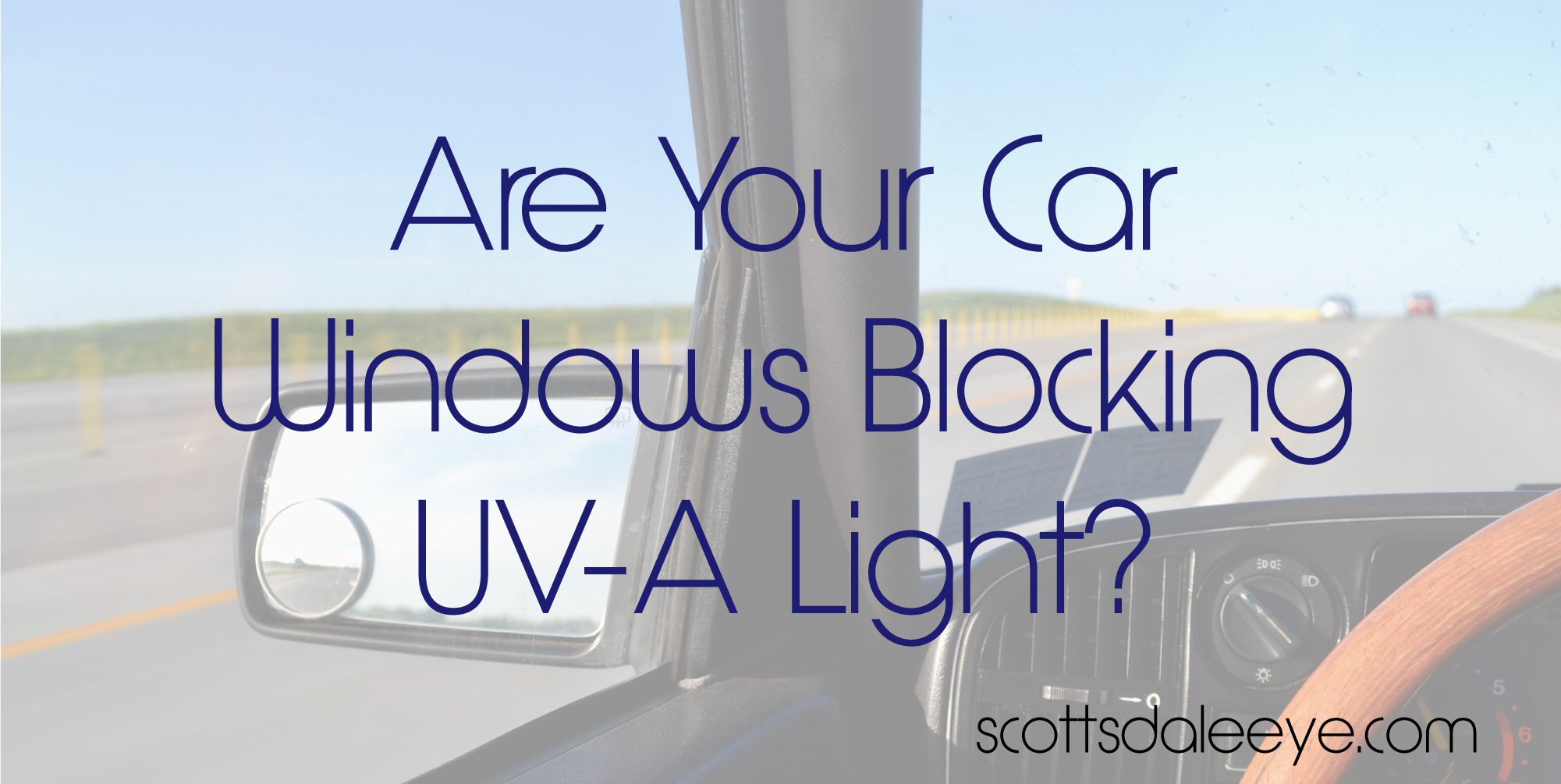We spend so much time in our vehicles driving to and from work, running errands, or carting the kids all over town, but are we getting the protection we need from the sun?
A Recent assessment on automobiles was conducted to assess the levels of ultraviolet light protection in windshields and driver side windows. This study was done after recent findings that associated Ultraviolet-A light (UV-A) with an increased risk for skin cancer and cataracts.
Cataracts generally develop slowly over time as we age but with increased levels of UV-A light the cataract can develop faster. When a cataract develops the normally clear lens in the eye becomes increasingly cloudy causing blurred vision. Other symptoms of cataracts are sensitivity to light and glare, seeing halos around lights and increased vision problems at night. To read more about cataracts and cataract symptoms click here!
The Ultraviolet Light assessment looked at 29 different automobiles from 15 different manufacturers with the car years ranging from 1990 to 2014.
The results show that an average level of UV-A blockage from the front windshield was at a high of 96% blockage. The average level of UV-A blockage from the driver’s side window was a lot lower at only 71% blockage. These numbers are strictly averages and a high level of protection was only found in 4 out of the 29 automobiles tested. With the numbers being an average there leaves certain automobiles with lower protection from UV-A light.
The results showed that side widow UV-A blockage was much lower than blockage from the windshield. Windshield and side window blockage from UV-A light is not at 100% leaving a greater risk for cataracts and skin cancer.
The study concluded that automobile manufacturers might want to consider increasing the UV protection in all windshields and side windows in future cars.
Visit http://goo.gl/skGDnB to learn more about this study!

